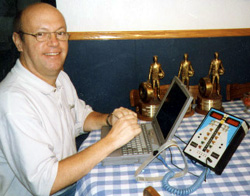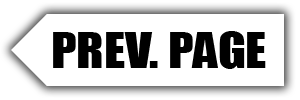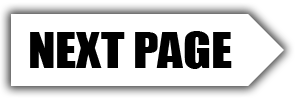
Seems things are turning around; do you see it that way?
Instead of looking at the changes in both NHRA and IHRA national and divisional events and trying to see what is going on, I had another idea for this month. How are the local tracks around the country doing? I made maybe 12 calls to different tracks that have owners or managers that I have personally met. I simply asked them “How are things going?”
The responses I got were pretty much 100% positive and they all seemed in agreement that they had found out what changes they needed to make to keep the drag-strip business in the black and help the facilities grow. (One clue: it was bracket racing that is saving the tracks.)
Fully 90% of them said they had finally “found the right schedule” to make their test and tune nights as strong as they could be. Some of the smaller tracks were doing a special mid-week Street Car Night, some had them on weekends, and a couple were doing Street Car Test and Tune and No-Prep style races a couple times a month and had dropped their bracket racing program to four or five weekends a year.
For me, personally, that sounds bad as I have no personal interest in the Street Car test and tunes or No-Prep races. Remember, I am 65 years old and about to quit racing so my opinion is out-of-date for what a track has to do today to pay the bills and make some profits.
I think getting the younger men and women out to the track in their street cars for a night of having fun with test and tune races, grudge races and “No Time” on the scoreboard match races is actually where drag racing started back in the 1950s. I guess it is just time to “start over” and let the new blood get what they want. I know affordability is a key factor for new racers to get into our sport. A typical S/Pro or Super Class car is going to cost $25,000 to $80,000 if you want a quality car. Sure you can get a footbrake car for PRO ET for around $8,000-12,000 but it won’t be much to look at and probably older than the young racer who is interested. How many 20 to 30 year-olds even remember seeing a 1967-69 Camaro or a 1965 Max-Wedge Belvedere? Probably none of them even know what they are. Now a 2006 Camaro or Mustang…yes, they probably have friends who have had one.
It comes down to brand awareness to a point. They have no experience on tuning a car with a regular ignition, carburetor, changing intake manifolds, dropping a better cam in their engine, etc. It’s not a bad thing, it is just different than we “experienced” guys remember how we got into drag racing.
I hope the new racers just find it interesting enough to stay interested in the cars, making some modifications and supporting their local drag-strip; that is the most important part.
What happens to all the “experienced” bracket racers who have no real local track that has a decent payout program? They travel the country going to $10,000, $25,000, $50,000 and even a race called The Million. Racing for us old guys who don’t know any better than to throw money at our “passion” will always have a place to race, but it may not be the local drag-strip.
Personally, I am very lucky on that part as I have a local track (4 miles away) that runs a bracket program that is offering 15 races paying $2,000 to win and three races that pay $5,000 to win. Will I be towing around the country? Absolutely NOT! For me, home is where I can bracket race for the biggest payout with the least expenses.
 I want to publicly thank Cedar Falls Motorsports Park in Cedar Falls, Iowa, for having enough faith in Midwest bracket racers to guarantee a payout structure like they have in 2016.
I want to publicly thank Cedar Falls Motorsports Park in Cedar Falls, Iowa, for having enough faith in Midwest bracket racers to guarantee a payout structure like they have in 2016.
For me and thousands of other racers and tracks across the country, THINGS ARE LOOKING GOOD for drag racing. Support your local tracks, go to the Big Bucks races, you choose. The important thing is GO RACING! ![]()



